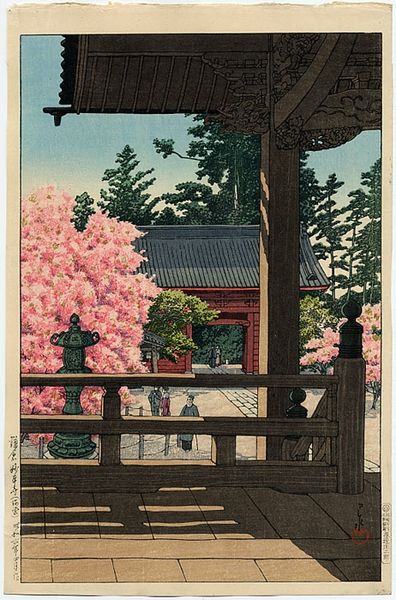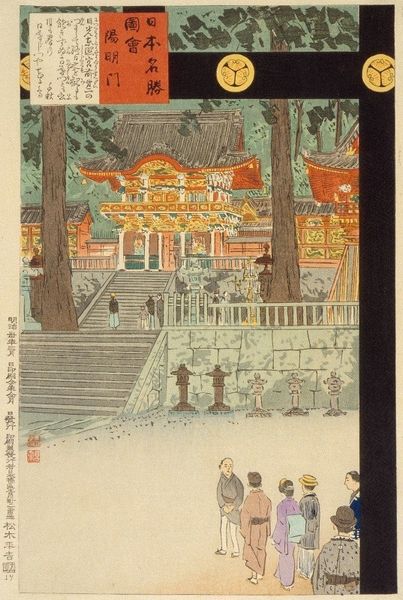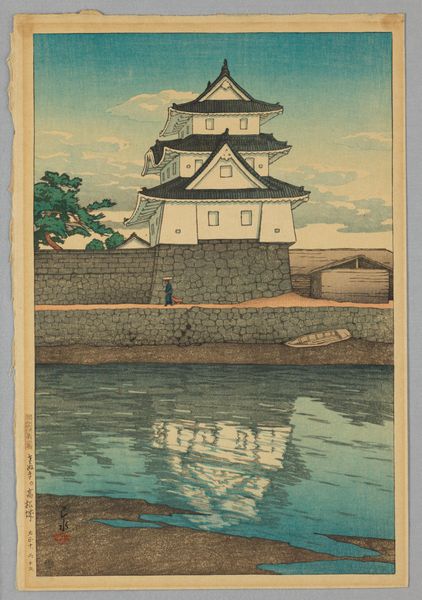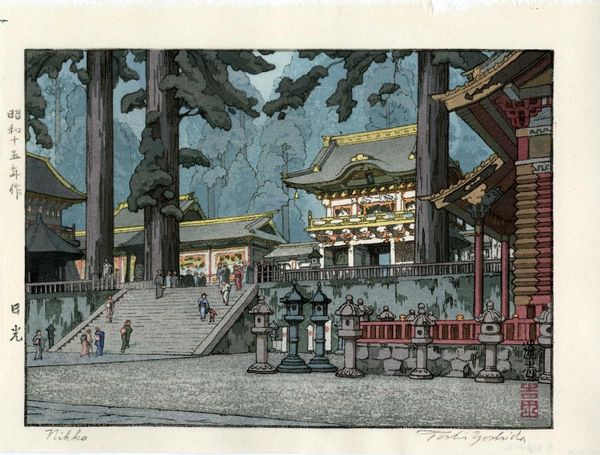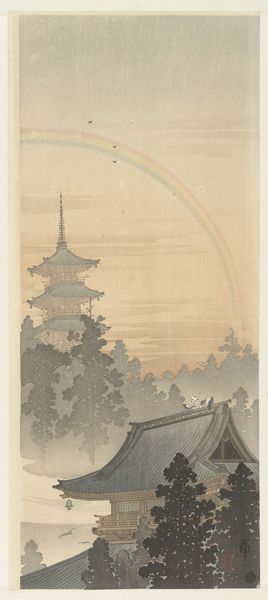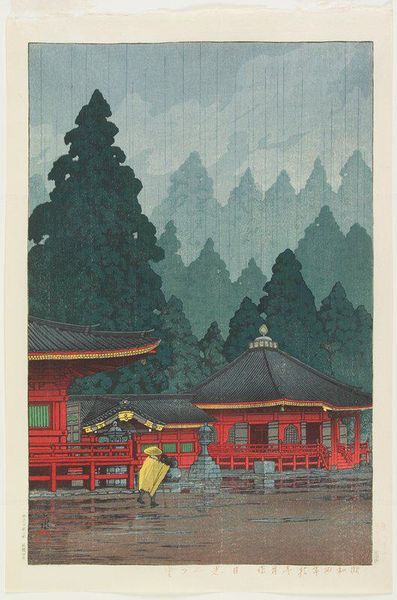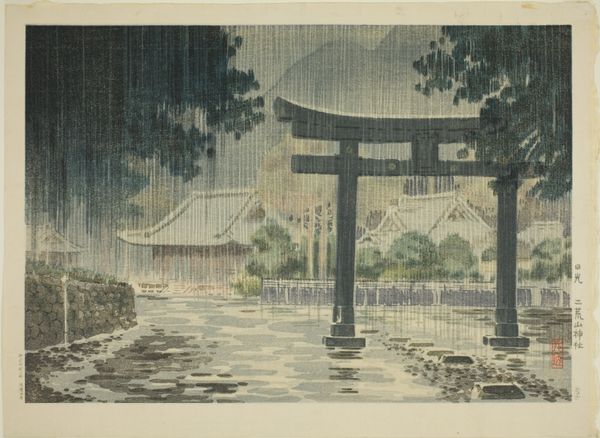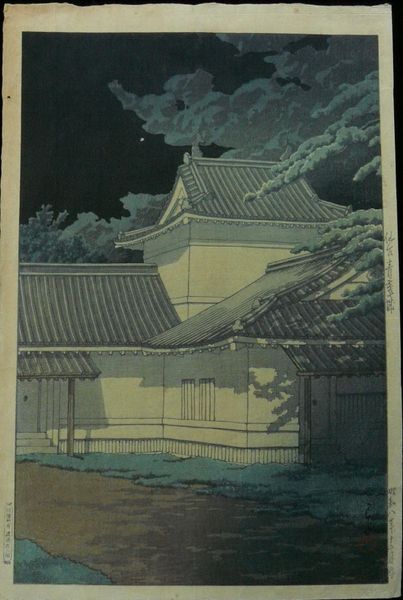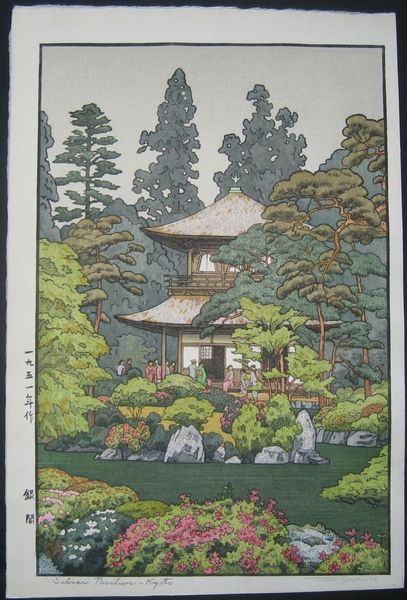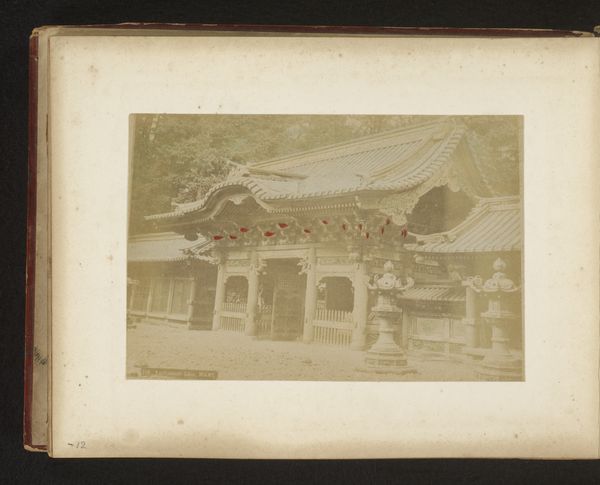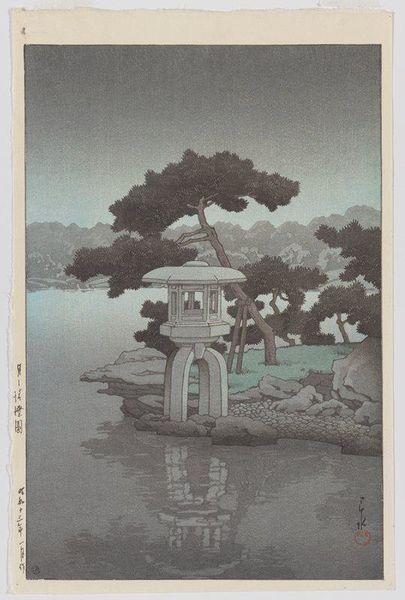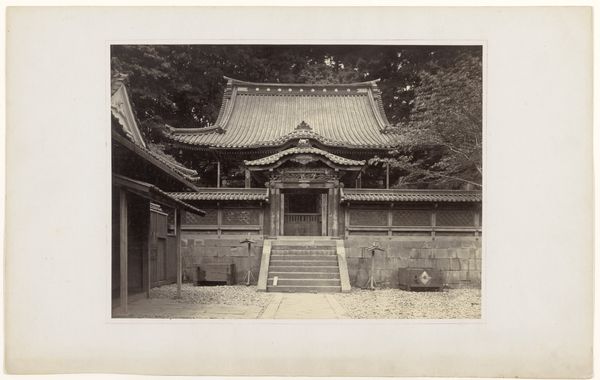
Copyright: Public domain Japan
Editor: Here we have Kawase Hasui's 1937 woodblock print, "Zenstu Temple in Sanshu". It’s incredibly serene, almost melancholic with the rain. The temple is impressive, but I'm also struck by how ordinary life continues around it with those figures walking with their umbrellas. How do you interpret this work, looking at it through a wider lens? Curator: It’s crucial to consider this work within the context of Japanese modernism and the rise of national identity. Hasui and the *shin-hanga* movement consciously revived traditional ukiyo-e techniques, but aimed to create prints reflecting a modern Japan. Editor: So, it’s not just about beautiful scenery? Curator: Precisely. This idealized depiction of a serene temple exists alongside increasing militarization and imperial expansion in the 1930s. Consider the figures: are they simply going about their day, or are they symbols of resilience, maintaining normalcy amidst societal pressures? Are they also a statement of social class? Who would own an umbrella? Editor: That's a powerful point. It forces us to ask what's absent, too. Curator: What’s not being shown? Where are the disaffected, the impoverished? This print functions as both art and cultural artifact, presenting a carefully curated image of Japanese life at a critical moment. How do you see its appeal today? Editor: It is beautiful and peaceful. I’m just struck by the weight of that history underneath the surface. It’s made me think about the responsibility of art and how it reflects, and sometimes obscures, reality. Curator: Absolutely. And how our perception of the work also changes, given that now, almost 100 years later, it embodies many different values and anxieties for current societies.
Comments
No comments
Be the first to comment and join the conversation on the ultimate creative platform.
